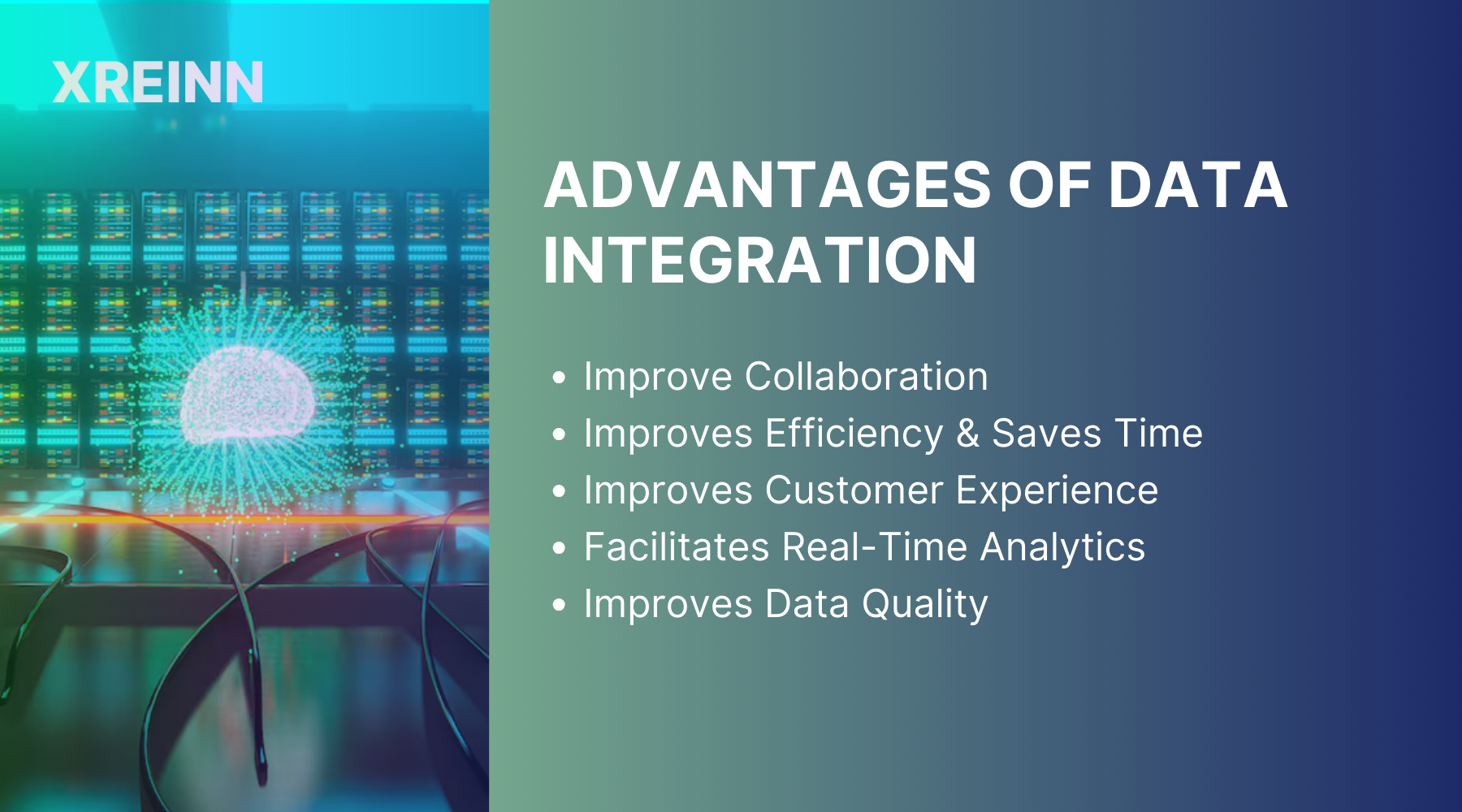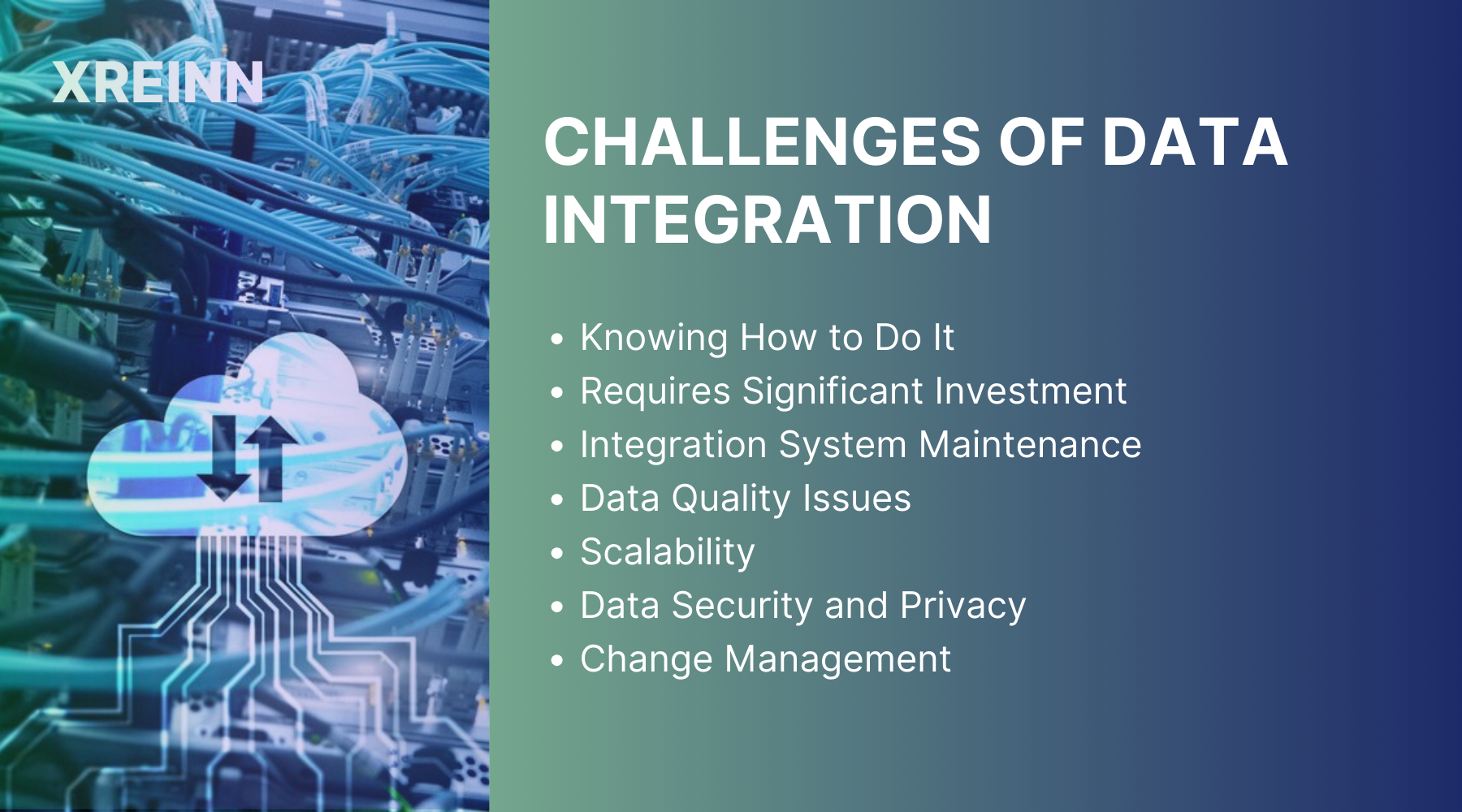Data Integration
The Ultimate Guide to Seamless Data Integration for Your Business
Jul 23, 2024
Without effective data integration, businesses encounter significant challenges such as disorganized information, operational inefficiencies, and missed opportunities for valuable insights. Disconnected data systems interfere with collaboration and accurate decision-making. It impacts overall business performance.
Data integration addresses these issues by unifying data from various sources, ensuring it is reliable and actionable. This improves collaboration, builds efficiency, and provides a comprehensive view of operations.
Let’s explore how data integration works, advanced methods, practical applications, and strategies to overcome common challenges, ultimately helping your business achieve its strategic goals.
What is Data Integration?
Data integration is the process of combining data from different sources into a unified view. It’s not a simple task, as it involves a series of complex steps to ensure the data is accurate, consistent, and usable. Whether you’re integrating data from different departments within your organization or external sources, the goal remains the same: to create a single, comprehensive dataset that provides valuable insights.
How Does Data Integration Work?
Data integration involves several key steps to combine data from various sources into a unified and usable format. The process begins with data extraction, where information is gathered from different systems such as databases, cloud storage, and flat files.
Once the data is collected, it transforms to ensure it meets the required standards for format and quality. This involves cleaning the data to remove duplicates, correcting errors, and standardizing it to create consistency.
After transformation, the data is consolidated and loaded into a central repository, such as a data warehouse or data lake. This centralization allows for easy access and analysis, providing a unified view of the data.
Throughout the integration process, automation tools and ETL (Extract, Transform, Load) frameworks are often used to streamline and improve efficiency. This structured approach ensures that data integration not only unifies disparate data sources but also maintains the accuracy and reliability needed for informed decision-making and strategic planning.
Types and Methods of Data Integration
ETL (Extract, Transform, Load)
ETL is a traditional method of data integration that involves extracting data from source systems, transforming it to meet the requirements of the target system, and loading it into a data warehouse. This method is strong and reliable, making it suitable for large-scale data integration projects.
Data Warehousing
Data warehousing involves storing integrated data in a centralized repository. It allows for complex queries and analysis, providing a comprehensive view of business data. Data warehousing is ideal for businesses looking to perform high-level data analytics and reporting.
Data Replication
Data replication involves copying data from one location to another. This method ensures that data is available in multiple locations, improving accessibility and backup. It’s particularly useful for disaster recovery and ensuring high availability.
Data Virtualization
Data virtualization allows you to access and query data without physically moving it. It creates a virtual layer that provides a unified view of data from different sources. This method is flexible and can quickly adapt to changes in data sources.
How to Improve Data Integration
Here are some strategies to improve your data integration processes:
Use Modern ETL Tools
Modern ETL (Extract, Transform, Load) tools offer advanced features such as real-time data processing, automation, and error handling. By adopting these tools, you can streamline your data integration workflows, reduce manual intervention, and ensure data accuracy. Tools like Talend, and Informatica provide strong solutions to manage complex data integration tasks effectively.
Implement Data Governance
Establishing a strong data governance framework is important for maintaining data quality and compliance. Define clear policies and procedures for data management, including data ownership, data quality standards, and data security protocols. This ensures that all data integration activities adhere to organizational guidelines and regulatory requirements, improving overall data integrity.
Use APIs
Application Programming Interfaces (APIs) facilitate seamless data exchange between different systems and applications. By using APIs, you can integrate data more efficiently and ensure that it is consistently updated across all platforms. APIs also enable real-time data synchronization, which is essential for businesses that require up-to-the-minute information.
Adopt a Hybrid Approach
Combining different data integration methods can provide greater flexibility and adaptability. For example, you can use ETL processes for batch data processing and data virtualization for real-time access. This hybrid approach allows you to customize your to meet specific business needs and optimize performance.
Regularly Monitor and Optimize
Continuous monitoring and optimization of data integration processes are vital for maintaining efficiency and accuracy. Implement monitoring tools to track data flows, identify Obstacles, and detect errors. Regularly review and refine your integration workflows to address any issues and improve performance. This proactive approach ensures that your data integration processes remain effective over time.
Improve Data Quality Management
Implement data profiling and data cleansing tools to identify and rectify data quality issues before integration. Standardize data formats and ensure consistency across all data sources. High-quality data leads to more reliable insights and better decision-making.
Invest in Training and Skill Development
Ensuring that your team has the necessary skills and knowledge to manage data integration effectively is important. Invest in training programs and certifications for your staff to keep them updated with the latest tools and techniques. Skilled professionals can handle complex data integration tasks more efficiently and contribute to the overall success of your data integration strategy.
Advantages of Data Integration

Improve Collaboration
Data integration unifies data from various sources, creating a single, reliable source of truth. This unified view breaks down barriers, building better communication and teamwork.
For example, marketing and sales can access the same customer data, leading to coordinated efforts and improved decision-making. This collaboration drives better business outcomes and a more unified work environment.
Improves Efficiency & Saves Time
Automating data integration reduces the need for manual data entry and reconciliation, minimizing errors and saving time. This efficiency allows your team to focus on strategic tasks rather than routine data management, leading to faster decision-making and increased productivity.
Improves Customer Experience
With integrated data, you gain a comprehensive view of your customers' interactions and preferences. This allows for personalized and engaging customer interactions. For instance, customer service can provide more relevant support, and marketing can design targeted campaigns, improving customer satisfaction and loyalty.
Facilitates Real-Time Analytics
Data integration enables real-time data processing and analytics, allowing you to monitor key metrics and respond promptly to changes. In retail, for example, real-time insights can help manage inventory and sales more effectively. This agility provides a competitive edge by keeping your business responsive to market trends.
Improves Data Quality
Data integration involves cleaning and transforming data to ensure consistency and accuracy. By eliminating duplicates and standardizing formats, you improve data quality, supporting reliable analytics and reducing the risk of errors in decision-making.
Challenges of Data Integration

Here are some challenges organizations face when integrating data:
Knowing How to Do It
Effective data integration requires specialized knowledge and expertise. Organizations often struggle with understanding the best practices, tools, and methodologies to employ. This can lead to inefficient integration processes and less-than-ideal outcomes. Training and hiring skilled professionals or consulting with experts can be important for successful data integration.
Requires Significant Investment
Data integration projects can be costly, involving investments in software, hardware, and skilled personnel. Implementing and maintaining data integration solutions requires significant financial resources. Organizations must carefully plan and allocate budgets to ensure that the integration process is sustainable and delivers long-term value.
Integration System Maintenance
Once data integration systems are in place, they require ongoing maintenance to ensure they continue to function correctly. This includes regular updates, troubleshooting issues, and adapting to changes in data sources or business requirements. The continuous need for maintenance can be resource-demanding and challenging to manage, especially for organizations with limited IT staff.
Data Quality Issues
Ensuring high data quality is a major challenge in data integration. Data from different sources can vary in format, accuracy, and completeness. Inconsistencies and errors can arise during the integration process, leading to unreliable data. Organizations need to implement strong data cleaning and validation processes to maintain data quality.
Scalability
As businesses grow, the volume and complexity of data increase. Scaling data integration solutions to handle larger datasets and more data sources can be challenging. Organizations need to ensure that their data integration infrastructure is scalable and can accommodate future growth without compromising performance.
Data Security and Privacy
Integrating data from multiple sources raises concerns about data security and privacy. Ensuring that sensitive information is protected and that data integration processes comply with regulatory requirements is critical. Organizations must implement strong security measures and privacy protocols to safeguard their data during and after integration.
Change Management
Data integration often involves significant changes to existing processes and systems. Managing these changes and ensuring that employees are on board can be difficult. Effective change management strategies, including clear communication and training, are essential to minimize disruption and ensure a smooth transition.
Conclusion
Data integration is a powerful tool for businesses looking to maximize the full potential of their data. By understanding the advanced methods and strategies, you can implement effective data integration solutions that improve collaboration, improve efficiency, and provide valuable insights. Despite the challenges, the benefits of data integration make it a valuable investment for any forward-thinking business.

Data Analytics
Jun 27, 2024Master key concepts in data analytics with practical tips to enhance decision-making and achieve success in your projects and professional growth

Data Analytics
Jul 01, 2024Learn the essential stages of the data analytics workflow to turn your data into valuable business insights and drive growth.

